1908 Indian Head Penny Coin Value: How Much Is It Worth?
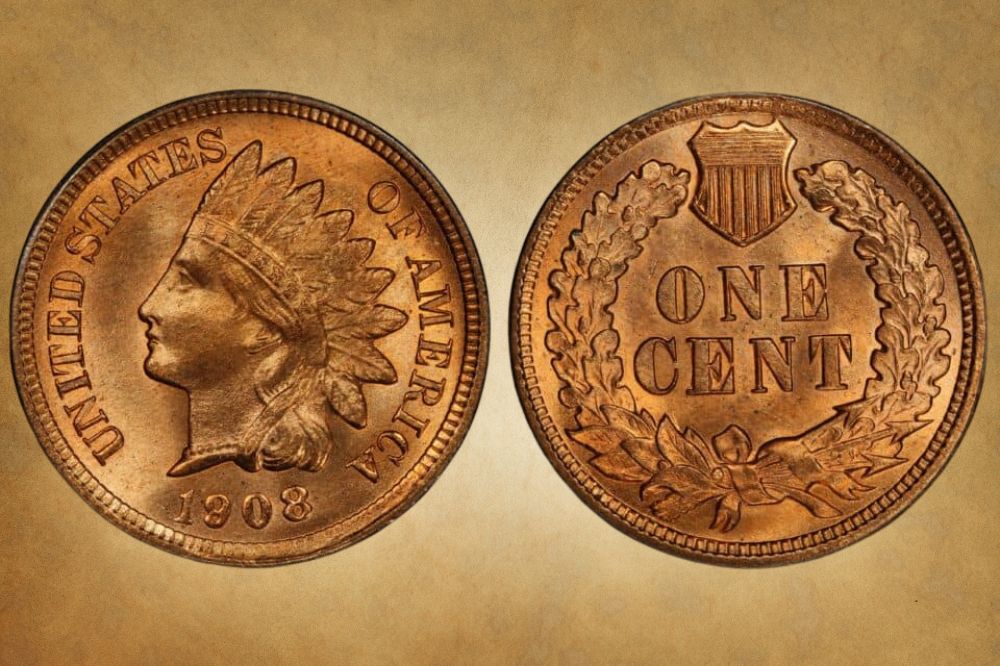
1908 was the penultimate year for Indian Head Pennies before they were replaced by Lincoln Cents in 1909. It’s also the first time Indian Head Pennies were coined in San Francisco. This was partially inspired by the over 100M mintage of 1907 that proved the need for additional mint locations. It was quite a landmark date! Let’s assess the 1908 Indian Head Penny Value.
1908 Indian Head Penny Value Chart |
|||||||
| Mint Mark | Good | Fine | Extremely Fine | About Uncirculated | Uncirculated | Mint State | Proof |
| 1908 (P) No Mint Mark Indian Head Penny Value | $2.28 | $5.13 | $11 | $23 | $42 | $63 | $160 |
| 1908-S Indian Head Penny Value | $102 | $140 | $198 | $285 | $329 | $454 | No S-Proofs |
1908 Indian Head Penny Value Guide
The mint mark on a coin is sometimes a huge value factor. This is less relevant for Indian Head Pennies because until 1906, they could only be coined in Philadelphia so none of them had mint marks. But the 1908 Indian Head Cent was minted both in Philadelphia and San Francisco, so let’s do a quick GPS-based analysis and see what value they add to these coins.
Also, here’s an extra element to consider – pennies have always contained a lot of copper. In 1793, they were pure copper, and in 1857, that dropped to 88% copper before sliding back up to 90% in 1864. For this reason, pennies are color-graded according to the redness of the metal. RD – for red – is the best grade, followed by RB for reddish-brown and BN for brown.
1908 (P) No Mint Mark Indian Head Penny Value
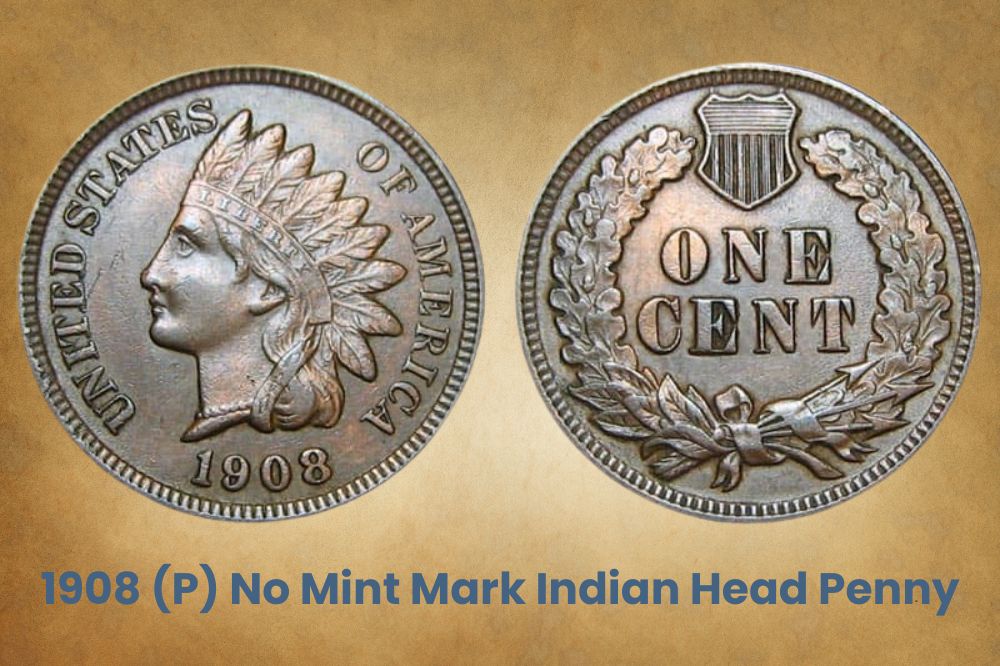
In 1908, the Philadelphia Mint made 32,326,367 Indian Head Pennies, including a little over 1.5K Proof Pennies. In August 2002, a 1908 Indian Head Penny graded AU 58 was auctioned for $1,380. More recently, an MS 66+ RB sold for $1,525 in August 2021 while an MS 67 RD sold for $33,600 in August 2019. An MS 67+ RD was half that, $18,400 in February 2021.
1908-S Indian Head Penny Value
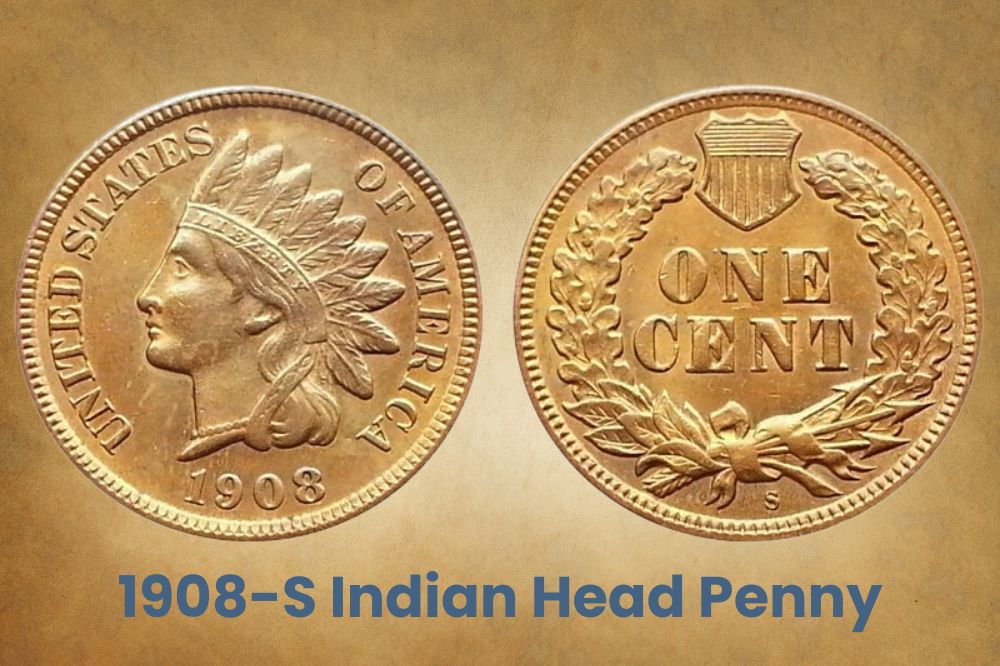
1908 was the first year that Indian Head Pennies were made at the San Francisco Mint, and they pressed 1,115,000 of these coins. In MS 66 BN, a coin sold for $3,239 in July 2021. Over a decade earlier, an MS 66 RB was $6,038 in January 2009. But closer to current times, an MS 67 RD auctioned for $21,600 in January 2021. PCGS has only graded 6 MS 67 RD coins.
1908 (P) Proof Indian Head Penny Value
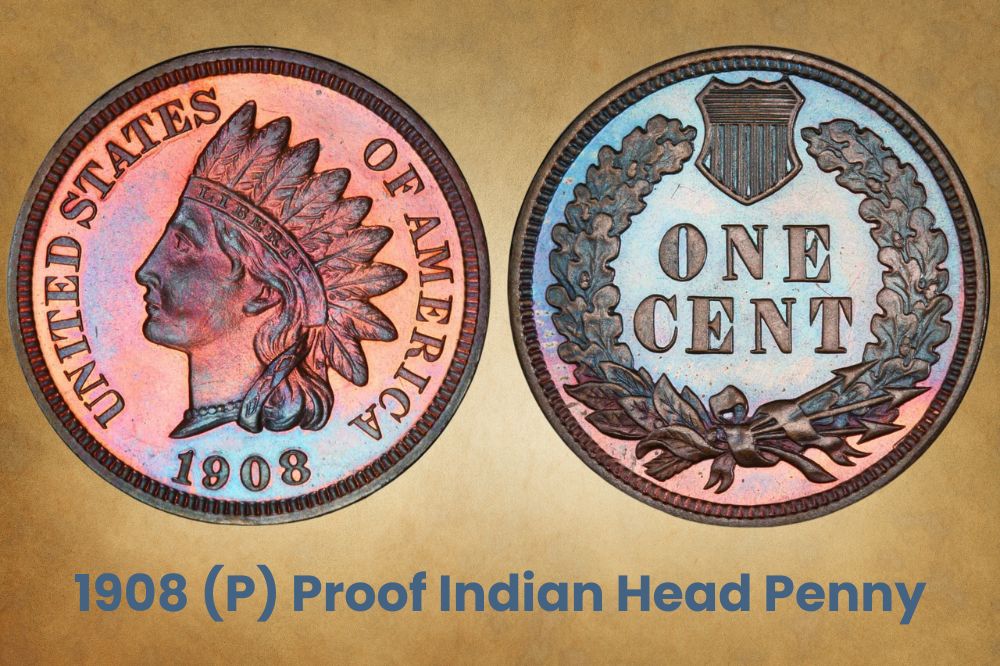
Why do proof coins exist? For three main reasons. One, to verify die quality and accuracy by producing the ‘perfect coin’. Two, for record-keeping, since a copy goes to the archives and sometimes to important museums. And three, to earn extra revenue for the mint through private sales directly to collectors. Notably, in 1908, the mint was starting to experiment …
From 1904, President Theodore Roosevelt asked for American coins to have more artistic merit, by which he meant deeper detail and higher relief. But these extra curves and high points made it tough to produce mirror-finish proofs since the designs were tough to polish without wearing down key features. So the US Mint looked to France for alternative options.
The Paris Mint had been messing with matte proofs, made with sandblasted dies and blanks instead of the standard acid-pickled frosting and mirror-like finish. So from about 1909 to 1917, the US Mint made matte proofs. Collectors didn’t like them much and they were soon phased out. But these low volumes give matte proofs a premium among modern collectors!
Mirror-Like Proofs vs Matte Proofs
Let’s get back to reflective proofs for a moment. They typically have a mirror-like field and a frosted device, though reverse proofs do exist that have a frosted field and a mirrored device. Until 1970, the mint used acid pickling to create that frosted finish, but the acid wash faded with every strike. So the first 50 to 100 coins showed the strongest contrast against the field.
These sharp coins are graded Deep Cameo by PCGS or Ultra Cameo by NGC. The next set of coins that have a slightly lower contrast is graded cameo, while the rest are just standard reflective proof coins. But starting in 1971, the mint used computerized lasers to achieve that hazy frosting. This smoky effect stayed consistent on all proofs, so everything was DCAM.
The Philadelphia Mint made 1,620 Indian Head Proof Pennies in 1908. A PR 66 BN sold for $1,645 in December 2021. Almost 15 years before that, a PR 67 RB was $4,313 in May 2007. As for red proof pennies, a PR 67 RD auctioned for $17,038 in December 2017. Proof Cameos cost far less. A PR 66 CAM sold for $7,800 in August 2019, and the 2023 estimate is $8,500.
Related Posts: 16 Most Valuable Wheat Penny Errors
1908 Indian Head Penny Errors
The minting process involves multiple stages and passes through the coin press. First, the artist uses his approved sketch to make an 8” prototype out of rubber, plaster, and epoxy. S/he gives this to the mint, which shrinks it in a reducing machine, a process that takes several days and results in a steel master hub. This hub strikes several steel master dies.
The dies make working hubs, which then make working dies. Before 1990, mint marks were then manually added to working dies before they were used to strike planchets and make coins. Because each of these phases took two strikes minimum, the target metal might shift in mid-strike, and that could cause errors like doubling, tripling, off-centers, or re-punching.
1908 Indian Head Penny MPD FS-301 Error
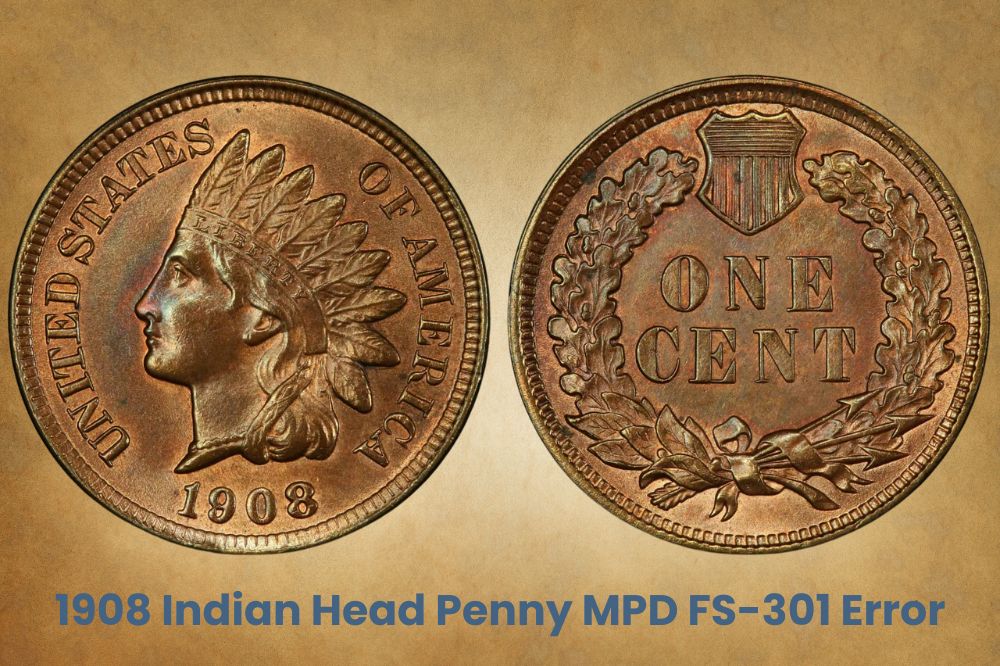
Because error coins can be valuable, numismatists study each coin carefully to spot them. And any error that’s verified within 30 days of the coin’s original release is listed as an FS or First Strike. This FS-301 is an MPD or misplaced date error – an extra date appears on the denticles. Its sales records are $75 for VF 35 BN in 2019 and $1,187 for MS 65 RB in 2021.
1908 Indian Head Penny MPD FS-302 Error
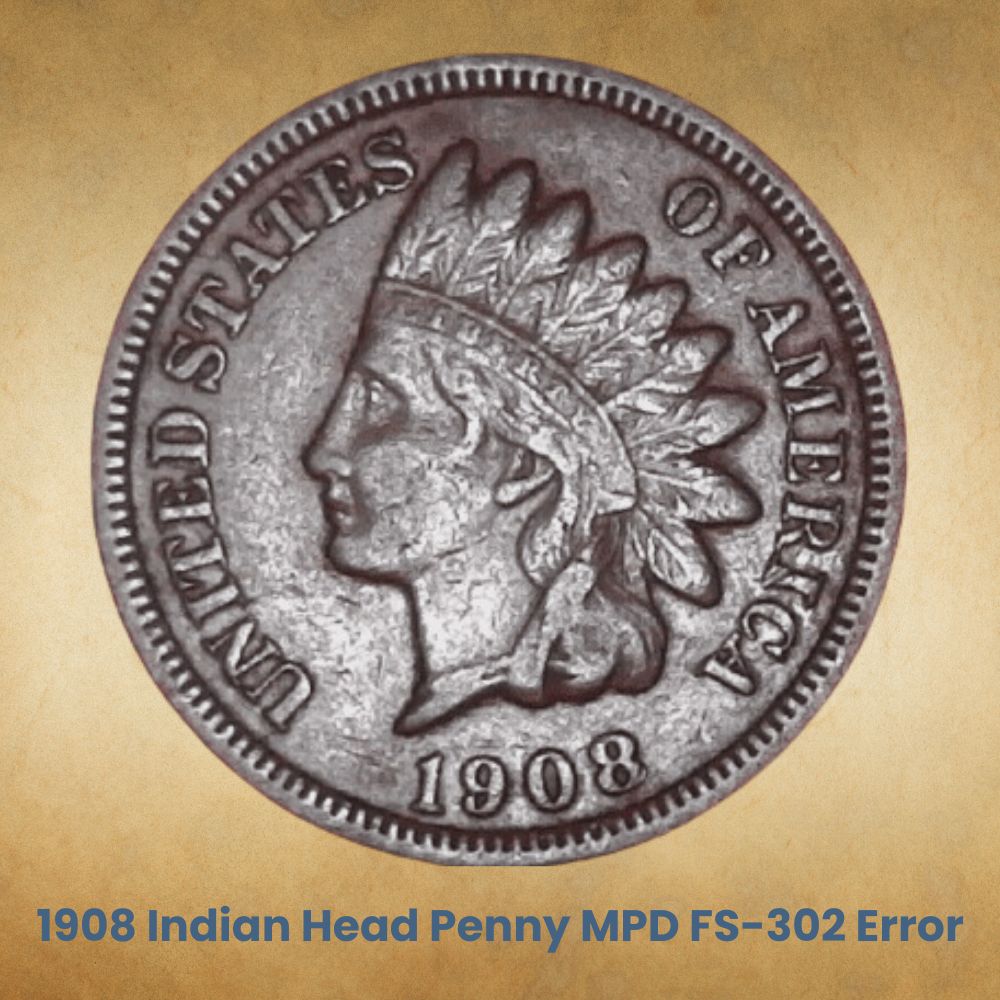
Die errors are called varieties because the same mistake will be transferred to every coin minted with that flawed die. And the 1908 Indian Head Penny FS-302 is the second MPD variety. Its current auction records are $798 for an XF 40 BN in June 2013 and $630 for an MS 64 RB in July 2019. Only one MS 64 was graded by PCGS, estimated at $925 in 2023.
1908 Indian Head Penny S/S RPM Error
Apart from misplaced dates, you can also find doubling in the mint mark, known as RPMs or re-punched mint marks. These are written D/D or S/S and read as D over D or S over S. It’s when the second or third mint mark strike lands on a slightly different spot from the prior one. In MS 62 BN, the record sale for this flawed Indian Head Penny was $750 in June 2021.
Related Posts: 19 Most Valuable Lincoln Memorial Penny Worth Money
History of the 1908 Indian Head Penny
Before Abraham Lincoln in 1909, we didn’t have any recognizable people on American coins. Instead, we used a vaguely feminine character that represented Lady Liberty. But even with this as an established fact, her visage was sometimes mistaken for a man. This identity error was loudest on the Mercury Dime (1916 to 1945) and the Indian Head Penny (1859 to 1909).
And in both cases, the problem came down to her … hat. On the Mercury Dime, Lady Liberty wears a Phrygian Cap with wings, which was mistaken for the Roman god Mercury and his magical winged helmet. And on the Indian Head Penny, Lady Liberty wears a string of pearls as well as the Native American headdress that was usually worn by men, aka feathered tiara.
Other than that, the Indian Head Penny didn’t raise much fuss during its 5-decade run. It was a well-accepted coin, and if it wasn’t for Theodore Roosevelt’s coin beautification project of 1904, it may still be in use today. But Teddy Roosevelt – the 26th US President – wanted coins to have more artistic merit, which meant higher relief and deeper decorative value.
Also, 1909 was the 100th Anniversary of Lincoln’s birth, so the public wanted him honored on a coin as well. That aside, the design of the Indian Head Penny was good enough that it barely changed in its 50-year history. The only points of note are the reverse wreath and the cut-off point for Lady Liberty’s neck. Both these elements were adjusted early on, by 1860.
Oak and Laurel Wreaths on the Indian Head Penny
Initially, the coin had a laurel wreath on the tails side and a pointed neckline cut-off on the heads side. But somewhere between 1859 and 1860, this changed to an oak wreath on the tails side and a rounded neckline cut-off on the heads side. Also, somewhere in the 1860s, James Barton Longacre, the Chief Mint Engraver, added his monogram initial to the coin.
It was quite a subtle signature, a small serif L hidden in Lady Liberty’s hair. The records don’t show exactly when he added it, but when copper coins became legal tender in 1864, the mint noted about 20 proof coins with the L and the rest without the L. This led to the 1864-L and 1864-No-L variety coins, and they resell for thousands of dollars in the modern market.
You should also consider that while Indian Head Pennies were coined from 1859 to 1909, they exist in two metal compositions. From 1859 to 1863, the coins were 88% Copper and 12% Nickel, then from 1864 to 1909, they were 95% Copper with the remainder in tin, zinc, or both. So those first bronze coins of 1864, with or without the L, can get quite expensive.
Related Posts: 19 Most Valuable Wheat Penny Worth Money
How to Identify the 1908 Indian Head Penny?
Part of being a coin expert is getting familiar with the technical terms. So we’re going to give you a primer on the basics of coin description. The blank discs that get struck to make coins are called planchets. The front or heads side of any coin is referred to as its obverse, and the back or tails side is its reverse. The sides that sometimes have ribs or reeds are called edges.
On the coin itself, the image, usually a symbol or a portrait, is called the device, while the background is called the field. The words on the coin are either mottos or legends while the numbers typically show the minting date. On some coins, you might find some extra initials or monograms that identify the artist who designed the coin. Now, let’s talk about features.
The Obverse of the 1908 Indian Head Penny
The obverse (heads side) of the 1908 Indian Head Penny has Lady Liberty depicted as a young woman in pearls. She’s also wearing the Native American headdress that’s usually donned by men. In front of her face are the words United States and behind her head are the words Of America. The date is below her neck, and the L for Longacre is hidden in her hair.
The Reverse of the 1908 Indian Head Penny
The reverse (tails side) of the 1908 Indian Head Penny is dominated by its denomination. One Cent is struck in a large font at the center of the coin. An oak sprig curls around the writing, with a ribbon at the bottom that holds three arrows. A shield sits at the wreath’s top.
1908 was the first year when Indian Head Pennies were coined in San Francisco, so the mint mark was placed on the reverse of the coin. The S Mint Mark is placed towards the bottom rim of the coin. It sits below the bow of the ribbon that’s wrapped around those three arrows.
Other Features of the 1908 Indian Head Penny
The 1908 Indian Head Penny has denticles along its front and back rims. It’s a bronze coin made of 95% copper and 5% tin or zinc, occasionally both. The coin is 19.05mm in diameter and in 1908, it weighed 3.11g. The width and weight reductions were caused by rising metal prices, since earlier pennies from 1857 to 1863 were thicker, had nickel, and weighed 4.67g.
